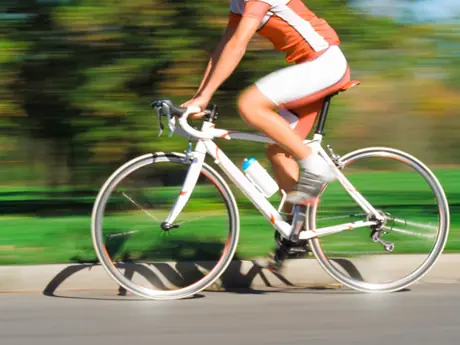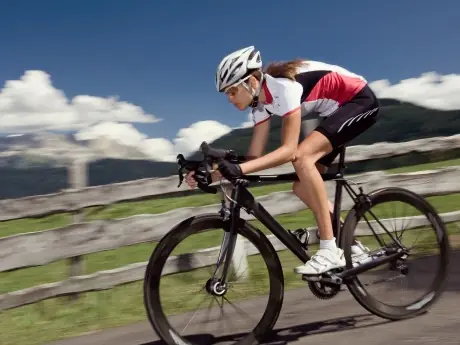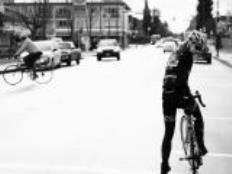
The learning curve for a beginner cyclist isn't as steep as you might think. But if you want to take your cycling to the next level, you'll need to avoid a few of the more common newbie mistakes.
Check out these five common beginner questions that will help you ride better and be safer out on the road.
Q: Is there a difference between men's and women's saddles?
In general, men's saddles are longer and narrower due to differences in the pelvis. A female saddle is shorter and wider and normally fits the female anatomy better. You'll still find that there are plenty of women who will say that a male saddle is just as comfortable as a saddle designed specifically for women. It comes down to preference.
More: The Quest for the Perfect Saddle
Q: I just started riding a road bike and I'm having a hard time getting comfortable enough to reach down and grab my water bottle? Any suggestions?
Anyone who's jumped on a performance road bike for the first time can attest to this. The handling can feel jumpy because of the aggressive position and skinny tires.
The mistake most beginners make is that they try take a drink as they're slowing down. As your speed decreases, it becomes harder to balance the bike, which makes reaching down for a bottle feel like you're about to hit the pavement.
To gain comfort, first practice riding with only one hand. You'll likely be more comfortable holding the bar with one hand over the other. Keep your speed at a moderate pace and practice removing the other hand. As your balance improves, reaching for the bottle will be easier. Remember that you'll want to wait to grab for a bottle when the pavement is smooth. A bump could take you off course quickly and cause a crash if you haven't adjusted to the bike. Try to keep your eyes on the road instead of looking down for the bottle. With practice, this will get easier.
More: Bike Handling Clinic: Drill That Skill
Q: Why am I so hungry an hour or so after I get on the bike?
Most of the time this is due to not eating enough food at breakfast. Most new cyclists miscalculate how many calories they will burn on a ride. Because it's easier for cyclists to maintain lower heart rates, it's easier to exercise for several hours. Caloric expenditure can go into the thousands on a long ride—cyclists in the Tour de France can burn up to 4,000 to 5,000 calories per day.
To remedy this, eat a balanced breakfast and make sure you carry food with you on the bike just in case hunger strikes. One energy bar (or the equivalent) per hour of riding is the general rule to follow.
More: Why Breakfast Is the Most Important Meal of the Day
Q: Do I need to use clipless pedals? Is there an advantage?
Beginners are often afraid to make the switch to clipless because of the intimidation factor, and rightfully so. Almost everyone falls the first few times. But once you get the hang of it, clipless pedals can offer some serious benefits.
By fixing your feet to the pedals, you'll allow yourself to pedal in circles instead of only being able to push down like you can with standard pedals. This will make your pedal stroke more efficient and allow you to recruit the muscles of the calves, hamstrings and gluteal muscles for power as opposed to just relying on the quadriceps. Your speed and balance will improve as a result.
More: 6 Beginner's Tips for Clipless Pedals
Q: I've had IT Band problems as a runner. Will I have the same problem as a cyclist?
Changes in terrain and speed force a runner to adjust his or her stride frequently. Weakness in gluteal muscles and in the core can lead to ITBS. But just because the motion of pedaling is unchanging in cycling doesn't mean nagging injuries won't pop up.
A proper bike fit can prevent most overuse injuries. The most common cause of IT Band pain among cyclist results from having your saddle too high, which causes the pelvis to tilt side-to-side at the bottom (6 o'clock) portion of the pedal stroke. To be on the safe side, it's best to pay a little extra money and get fitted by a professional. It'll save you tons of money doctor's visits.
More: Tight IT Band: 3 Simple Exercises to Fix It Now
 Ready to ride? Search for a cycling event.
Ready to ride? Search for a cycling event.









Discuss This Article